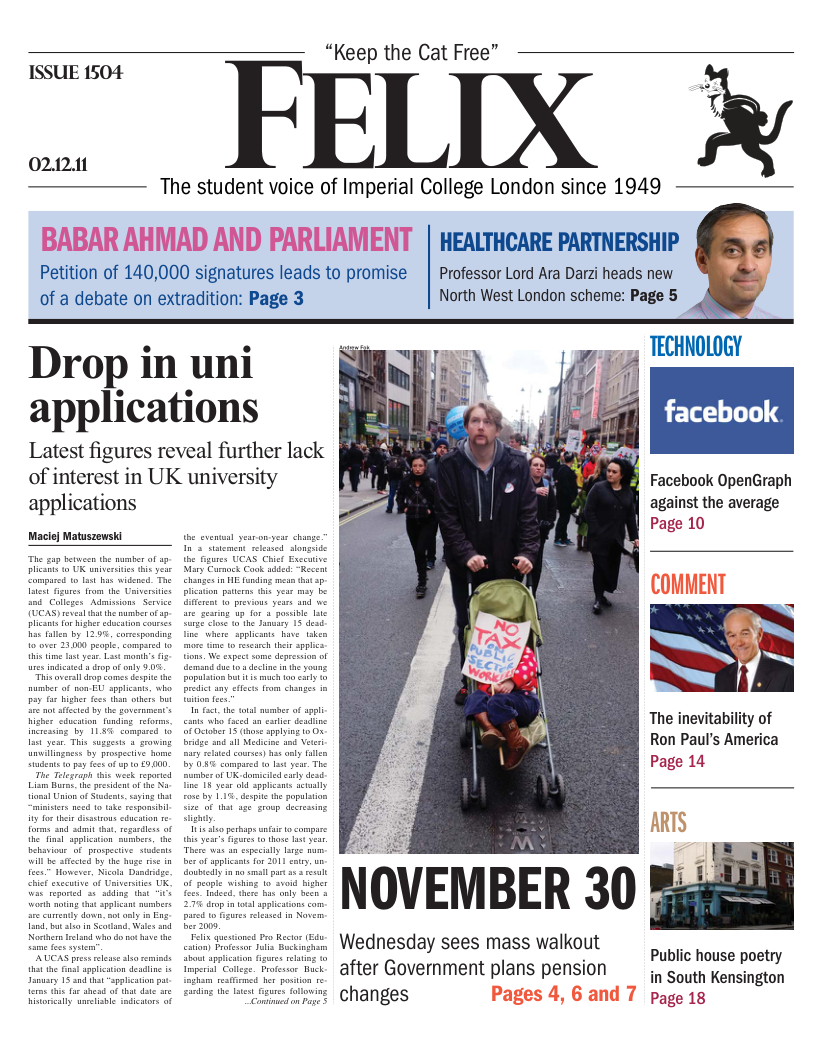Drop in university applications
Latest figures reveal further lack of interest in UK university applications

The gap between the number of applicants to UK universities this year compared to last has widened. The latest figures from the Universities and Colleges Admissions Service (UCAS) reveal that the number of applicants for higher education courses has fallen by 12.9%, corresponding to over 23,000 people, compared to this time last year. Last month’s figures indicated a drop of only 9.0%.
This overall drop comes despite the number of non-EU applicants, who pay far higher fees than others but are not affected by the government’s higher education funding reforms, increasing by 11.8% compared to last year. This suggests a growing unwillingness by prospective home students to pay fees of up to £9,000.
The Telegraph this week reported Liam Burns, the president of the National Union of Students, saying that “ministers need to take responsibility for their disastrous education reforms and admit that, regardless of the final application numbers, the behaviour of prospective students will be affected by the huge rise in fees.” However, Nicola Dandridge, chief executive of Universities UK, was reported as adding that “it’s worth noting that applicant numbers are currently down, not only in England, but also in Scotland, Wales and Northern Ireland who do not have the same fees system”.
A UCAS press release also reminds that the final application deadline is January 15 and that “application patterns this far ahead of that date are historically unreliable indicators of the eventual year-on-year change.” In a statement released alongside the figures UCAS Chief Executive Mary Curnock Cook added: “Recent changes in HE funding mean that application patterns this year may be different to previous years and we are gearing up for a possible late surge close to the January 15 deadline where applicants have taken more time to research their applications. We expect some depression of demand due to a decline in the young population but it is much too early to predict any effects from changes in tuition fees.”
In fact, the total number of applicants who faced an earlier deadline of October 15 (those applying to Oxbridge and all Medicine and Veterinary related courses) has only fallen by 0.8% compared to last year. The number of UK-domiciled early deadline 18-year-old applicants actually rose by 1.1%, despite the population size of that age group decreasing slightly.
It is also perhaps unfair to compare this year’s figures to those last year. There was an especially large number of applicants for 2011 entry, undoubtedly in no small part as a result of people wishing to avoid higher fees. Indeed, there has only been a 2.7% drop in total applications compared to figures released in November 2009.
Felix questioned Pro Rector (Education) Professor Julia Buckingham about application figures relating to Imperial College. Professor Buckingham reaffirmed her position regarding the latest figures following statements made after initial forecasts in October, saying: “Although marginally down on last year, applications to the College look very healthy. We will need to wait until mid-January to draw any conclusions about the final application numbers.”
Professor Buckingham told Felix in October that this year’s application rates to Imperial were “broadly in line” with 2010 application figures.
While the headline figures do seem worrying, it is clear that the situation is more complicated than it seems at first sight. It is certainly too soon to be making alarmist comments – we will only know the full impact of the higher education funding changes in January.






